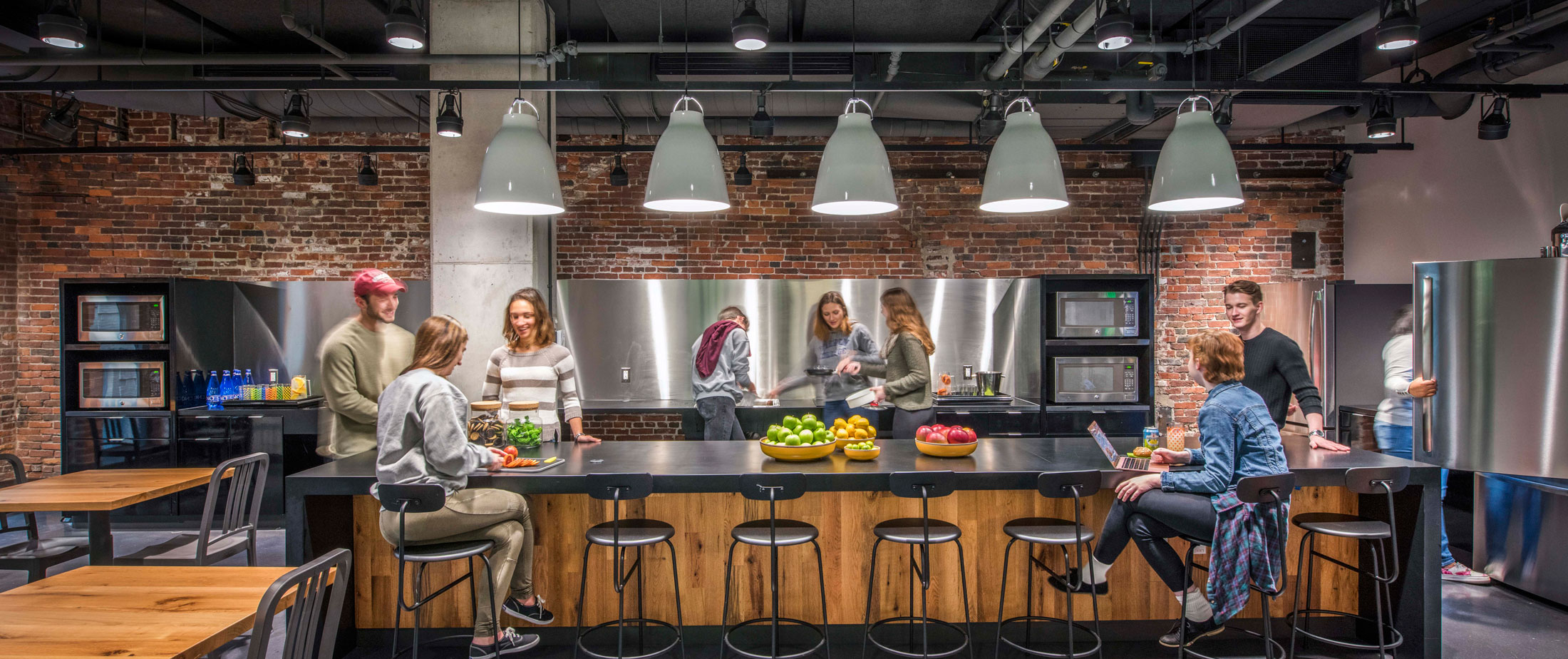
The Pandemic Will Accelerate Four Trends in College Facilities
Principal John Martin draws attention to changes to watch as for as higher education institutions plan for a post-pandemic world in Banker & Tradesman.
As you read this, many colleges and universities across the country are putting together careful plans to welcome students back to campus, albeit in a modified environment. While this is a fluid and evolving situation, many existing trends in higher education facility design may factor into the choices made across academic institutions in the coming weeks and months.
The dramatic switch most colleges and universities made earlier this year to virtual learning in response to COVID-19 related public health concerns was enabled by the fact that many institutions had already invested capital in expanding their virtual learning communities.
At the same time, this unique moment in time has reinforced what many professors, undergraduates and graduate students value about the campus-based learning culture and how it has evolved in recent years. Trends in technology, the way students approach learning and an interest in multi-disciplinary and hands on learning have already made their mark on campuses. The pandemic is likely to accelerate some of the trends as colleges and universities move forward and plan for a post-pandemic world.
Lecture halls will quickly become a thing of the past. Before physical distancing was part of the vernacular, technology had already untethered many large lecture courses from the lecture hall. Students had already become accustomed to downloading lectures to their personal devices and listening to them at their convenience (sometimes at 1.5 speed!). The recent transition to virtual learning has reinforced that lectures no longer need to be delivered in person, while highlighting the appetite for the small-group discussion dynamic among young adults and their professors. In a fall back to school environment (where smaller groups are necessary), these conversations may take place in a residence hall, cafe or outdoor setting.
Lab spaces of all kind will expand. A focus on STEM subjects had already led colleges and universities to invest in more dynamic and flexible lab spaces, meeting the needs of a set of disciplines that thrive on innovation. The generation of middle and high school students learning in a time of COVID-19 may be more eager to explore the sciences and technology that enables change, moving beyond the hard sciences to virtual communications, manufacturing and 3D printing. The point of intersection between creative disciplines and innovation may also flourish, creating interdisciplinary new lab environments.
Learning disciplines (and their associated spaces) will become more expansive. In a global, interconnected world that has suddenly shrunk, it has become clear that the incidental creative collisions and happy accidents of collaboration across disciplines are a highly valuable part of innovation. Higher education learning spaces will increasingly be designed to foster these interconnections – for example, bringing philosophy majors into discussion spaces with research scientists, artists into studios with engineers, future teachers into connections with business students.
Living and learning spaces also overlap. This intersection of students and disciplines will soon extend into learning environments; particularly in the next several years, when physical space may become a hot commodity, the trend of integrating living and learning spaces will accelerate. Doing so will show the benefit of leaning into this generation’s interest in seamless, interconnected living and learning environments.
There is no doubt that the current pandemic will make a dramatic mark on the short-term future of higher education. But as it relates the longer term, I suspect we will find that the trends that emerge are actually a continuation of the way colleges and universities had already begun to evolve their physical space to meet student needs and interests.
This article was first published in Banker & Tradesman on July 6, 2020.
Header Photo: © Peter Vanderwarker
